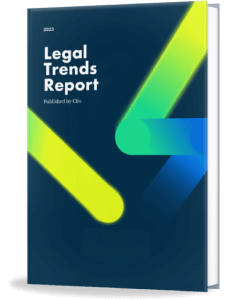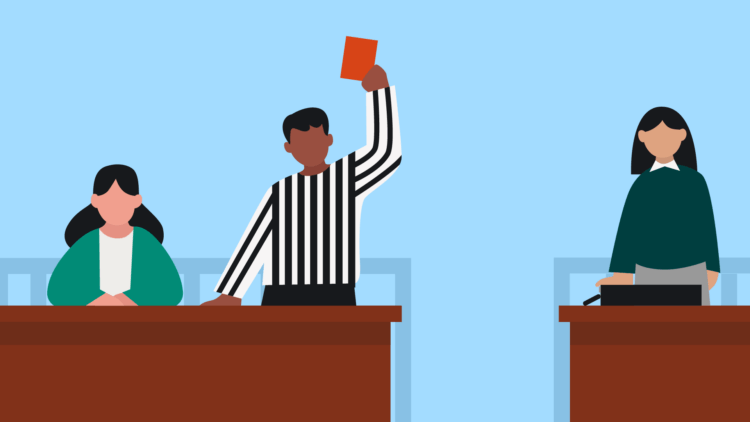Voir dire plays a pivotal role in the legal system by seeking to ensure the fair and impartial administration of justice. With its central place in the jury selection process, voir dire is an integral component of trials and the court system at large.
In this guide, we outline the concept of voir dire—what exactly it entails, its history, and its significance. We will also explore the impact of voir dire on the outcomes of legal proceedings, and discuss some tips and strategies for conducting voir dire effectively.
What is voir dire?
The simplest voir dire definition is the questioning of potential jurors during the jury selection process. The questioning is primarily done by the attorneys to prospective jurors from the jury pool—although the judge may also ask the jurors questions.
The wait is over…gain an edge with the latest report.
Get the Report
History of voir dire
The practice of voir dire dates back centuries.
The term itself means “to speak the truth” in Anglo-Norman, a dialect of Old French. In the 1760s, William Blackstone discussed voir dire in his Commentaries and described the right to challenge jurors “propter affectum, for suspicion of bias or partiality.” Blackstone lauded the practice as part of the greatness of English law.
Voir dire is equally important in the American legal system today. While the ultimate goal of voir dire is the same as it was 250 years ago, it is important to employ modern voir dire strategies for the modern era.
How does voir dire work?
In American jurisdictions, the particulars of voir dire vary from state to state, as well as between state court and federal court.
However, many elements of the voir dire process are consistent with the following:
- Generally, each potential juror will have filled out an initial questionnaire with some basic information about that person.
- When the jury pool is called into the courtroom for voir dire, the attorneys’ roles are to engage in questioning potential jurors to assess their qualifications, attitudes, and biases.
- The judge will moderate the process and often participate in questioning.
A lawyer can follow various strategies with their questioning. They can pose open-ended questions or hypothetical scenarios. They can seek to elicit personal anecdotes. All of this is done in an attempt to uncover the potential jurors’ true opinions and attitudes.
While the attorneys have the goal of achieving transparency, they must also remain on guard against potential deception by prospective jurors.
The attorneys can object to potential jurors in two ways:
Challenges for cause are made on the grounds the prospective juror is unfit for jury service. If the judge agrees with the basis for the challenge, the prospective juror is excused. Each side also has a certain number of peremptory challenges, which can be used to eliminate prospective jurors without needing the judge’s approval.
You may like these posts
Strategies for an effective voir dire
Conducting voir dire is a difficult task, often as much art as science. Nonetheless, there are several strategies an attorney can follow for an effective voir dire.
Advance preparation
Coming into the jury selection process, you should already have a solid case analysis in place. This means knowing what the trial themes will be, the critical issues, and the weaknesses from your client’s perspective. This will enable you to consider the types of juror biases that will likely affect their view of the parties and the case itself.
One method of enhancing your case analysis is the implementation of practice management software, such as Clio Manage. By keeping all your case-related materials in one place, accessible remotely by all team members, you gain the benefit of streamlining the day-to-day work. With these details handled smoothly—calendaring, document management, task management, and other critical functions—you can focus more easily on the merits of the case itself.
And, if you practice personal injury, Clio has a new suite of features to help you further organize your files, including:
- Managing medical records with ease
- Tracking and summarize damages
- Settlement estimates at your fingertips
Let’s help you remove operational barriers, drive cases forward efficiently, and deliver client-centered experiences with ease. Schedule a demo today to get a tour of Clio’s Personal Injury Add-On.
With your case analysis in hand, craft your voir dire questions ahead of time. Even if your wording is not exact, you will want to at least sort out the themes you will need to cover. Think of all the issues that will have an emotional impact on the jurors, and hit on the attitudes and beliefs that will increase or decrease that impact.
Research on potential jurors
Lists of potential jurors in the jury pool should be utilized to conduct as much research as possible.
The research itself should make use of paralegals and trial consultants when necessary.
Social media can be a treasure trove of information, revealing important factors such as occupation, social attitudes, and causes the juror identifies with—or objects to. Technology can help this process considerably, especially with the time constraints of the jury selection process.
Also make use of the information on the questionnaires submitted by the potential jurors. These provide an opportunity to use your questioning time more effectively. In addition, you may be able to identify potential challenges for cause.
Develop rapport with the jury panel
Voir dire is fundamentally a questioning process, but ideally it should not feel like an interview or examination. Instead, the trial attorney’s goal should be to start conversations and develop rapport with the jury panel.
In short, get the prospective jurors to loosen up and start talking, an approach that is more likely to generate candid answers.
Also be sure to spread your questions around, so you are not focusing on only one or a few prospective jurors. You can also start off with group questions, then drill down on specific jurors to elaborate on their responses. This will keep each member of the jury panel on their toes, so they do not withdraw or zone out, while also making the entire voir dire “conversation” seem more natural.
Remember that the rapport you develop here is likely to help during the trial itself. You want the jury to see you as likable and trustworthy. Accordingly, avoid arguments and minimize any negativity during your exchanges. Also note that this is an opportunity to educate jurors about your theories of the case.
Use open-ended questions
Another key element in effective voir dire is the use of open-ended questions. You are seeking to create an atmosphere that encourages the jury panelists to talk. This means avoiding closed-ended questions which prompt one-word answers, such as yes/no or agree/disagree. Instead, pose open-ended questions that call for a narrative and explanation from the potential juror.
Challenges and considerations
Voir dire presents some unique wrinkles that make it a challenging aspect of the legal system.
Balancing client advocacy with jury fairness
While you are obligated to be a zealous advocate for your client, an attorney must also keep in mind some considerations of jury fairness. If your opponent makes a challenge for cause against a clearly biased juror, it may not be in your interests to strenuously oppose the challenge. The entire legal system has an interest in maintaining jury fairness, and the judge may not look kindly on your unreasonable obstinacy.
Achieving jury diversity
Keep in mind that peremptory challenges cannot be used to purposefully exclude jurors of a specific race, gender, ethnicity, or other protected classification.
Accordingly, if your peremptory challenges are being consistently made against jurors of one race or gender, you should be prepared to establish your legitimate reasons for these challenges. The juror statements you elicit in voir dire should help you do so.
Impact of technology
As we mentioned above, the use of social media and online platforms to gather information about jurors presents a great opportunity for trial jurors. However, it also presents some challenges and ethical issues.
Ensure that any online research does not include communication with the jurors. In fact, even if a juror simply receives notification that you have viewed their social media profile, this could raise uncomfortable issues. Employ online research for your jury pool, but be sure to keep it discrete and non-invasive.
Time constraints
Time constraints also pose a challenge for voir dire. There is often a limited amount of time to conduct the research on potential jurors. The jury pool list may not be available more than a few days before trial and, in some cases, is only available when voir dire begins. This can put quite a burden on your trial preparation.
Legal technology can serve you well in this respect. The right software can keep your juror information in one place, accessible from any location, making things easy for the legal team conducting juror research.
Final thoughts on voir dire
Voir dire is an integral part of jury selection, so trial attorneys must understand it well. This means knowing how the process works and the best strategies for performing it effectively. It also entails being aware of some fundamental challenges with voir dire, both logistical and ethical.
As the legal landscape evolves, voir dire can only fulfill its goals of upholding principles of equity if legal practitioners remain aware of contemporary issues and future trends in voir dire. This makes it essential to stay on top of these issues and trends. Some excellent strategies to accomplish this goal are subscribing to updated content on the legal industry, such as Clio’s, or attending legal conferences such as ClioCon.
We published this blog post in July 2023. Last updated: .
Categorized in: Uncategorized






